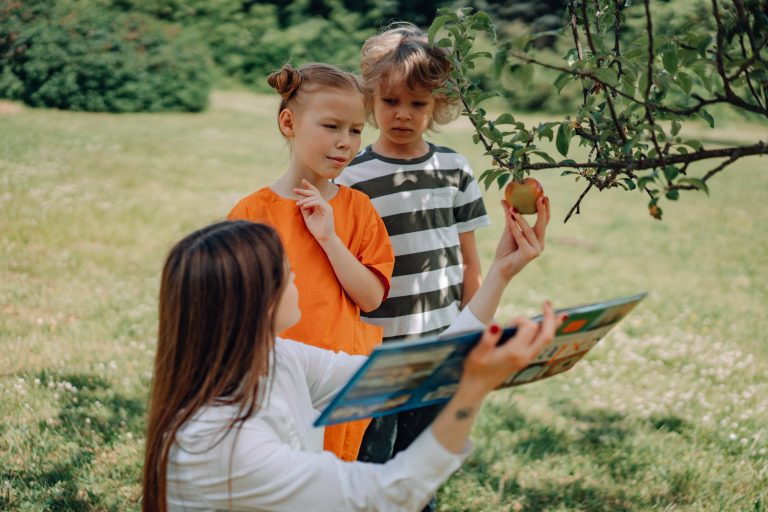Notebooking – What it is and How to Use it in Your Homeschool
The idea of notebooking has been around for awhile, but maybe you’re unsure of what it is, or how you can use it in your homeschool. If so, then this post is for you!

This post contains affiliate links, meaning that I’ll earn a small commission (at no extra cost to you) if you make a purchase using these links. As an Amazon Associate I earn from qualifying purchases. See my disclosure page to learn more.
Notebooking is a method that more and more homeschool families are adding to their weekly routines, and for good reason. It can be a great tool for any student, at pretty much any level, but is especially helpful for students who are reluctant writers.
My son loves to write and will often write stories and short books just for fun. My daughter on the other hand is completely the opposite! She does not like writing at all, and finds it to be a stressful, painful task! But even with her lack of enthusiasm for writing, she doesn’t mind doing notebooking pages because she can be more creative in how she presents what she’s learned, and the pages help give her some direction in what she could write.
So if you have a reluctant writer like I do, or are just looking for a method where your child can share what they know in a different way, then read on and see if notebooking is right for you!
What is notebooking?
Before getting into how notebooking can benefit your child, it’s important to know what it is in case you’re not familiar with it!
It is a pretty simple, yet effective method where your child creates their own notebook, similar to a journal or scrapbook that allows them to creatively show what they have learned about whatever topic/subject they are studying.
They can use premade pages to write about the topic (like the ones found at notebookingpages.com), as well as include maps, charts, timelines, diagrams, pictures or drawings. They are not writing a full report (unless that is something they want to do and include), rather they are using different techniques to show what they know, incorporating a written component as well as a visual one into their notebooking pages.
Benefits of notebooking
The great thing is that there are no rules as to what notebooking has to be or look like for your child! You and your child get to decide what their notebook will look like, allowing for more freedom and creativity to show off all they’ve learned!
For you child, the benefits are numerous. For one, they are able to show what they’ve learned in a creative way instead of simply taking a test, doing a worksheet, or writing a paper. Secondly, they can take more responsibility for their own learning as they work independently on creating their notebooks. Third, they can use notebooking for any topic that they may be interested in, so it can be used for a variety of subjects and in multiple ways, helping to keep them engaged in their learning.
For parents, there are many benefits to notebooking as well. One is that it can be used in many different ways and across all subjects. Also, there are little to no supplies needed, making it a cheap or even free method to incorporate into your curriculum.
Notebooking also is something that can be done by students of multiple ages since it can be easily adapted to any age. Older students can incorporate more writing, while younger kids can draw what they’ve learned, or even cut out pictures and paste them into their notebooks. So whether each student is studying something different, or all of your kids are learning about the same thing, notebooking works well because each child can make something at their own level and ability, and that’s unique to them and what they’ve learned.
This also makes keeping track of your child’s progress much easier. You can look through their notebooks and see what they do well with and where they may be struggling and need more help. I would not mark up or write these things directly on their notebook pages, but rather keep notes for yourself on what each child needs to work on. Or, if your child is older, you can always write down your feedback on a separate piece of paper, or just orally tell them your thoughts.
As you can see, there are plenty of benefits to incorporating notebooking into your homeschool, both for your child and for you as well.
What supplies are needed when notebooking?
Again, you do not need much for supplies when it comes to notebooking, which is definitely a bonus! You can use a blank lined notebook, a three-ring binder with loose leaf paper, or even premade pages like the ones at Notebooking Pages (you can even get free resources to try and see if notebooking is a good fit for your family!).
Then you can use whatever you’d like as far as doing the writing, drawing, sketching, etc! So things like pencils, markers, colored pencils, crayons, tape, scissors, and glue sticks are helpful. The sky is the limit to how your student put their notebooks together!
What to include in a notebook
Because your student is free to be creative and add what they’d like to their notebooks, there are no right or wrong things to include, but if you need some help getting started, then this list may be helpful!
- Outlines
- Maps
- Charts
- Notes
- Interviews
- Book or movie reviews
- Artwork
- Timelines
- Diagrams
- Sketches
- Nature study/journal
- Book reports
- Study notes
- Poetry
- Written narration
- Copywork
- Mind mapping
- Writing prompts
- Premade journal pages (like the ones found at notebookingpages.com)
More notebooking resources
Hopefully the list above is helpful in showing you some of the many things that can be included in a notebook, but if you need more direction or would just prefer to use premade journal and notebooking pages, then the following resources may be useful to you.
- NotebookingPages.com – Here you can find really helpful guides and more information on what notebooking is. You can also get free resources and notebooking pages when you sign up. And if you think that their notebooking pages are a good fit for your family, they even have a lifetime membership with tons of notebooking pages to use for a variety of subjects and topics.
- Daily Skill Building – You will find done for you, “open and go” type resources including notebooking pages and companion guides, and you can pick from digital copies or printed ones.
I hope that this post gives you a clearer understanding of what notebooking is, as well as some of the benefits it offers. If you don’t already use it, maybe you can give it a try and see if it works for your family!
And if you want more inspiration and ideas on all things homeschool, check out my post on some of the best homeschool blogs as well as other helpful homeschool resources!






